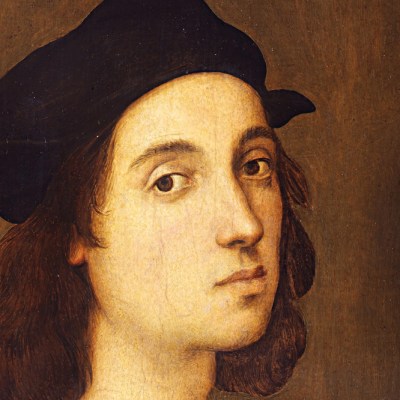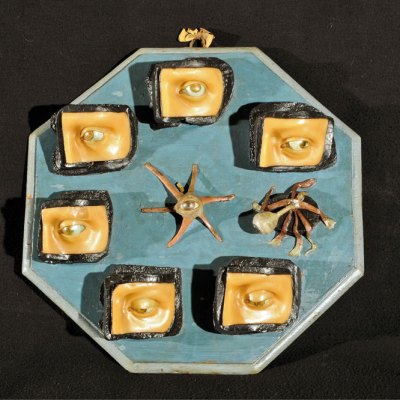Writing from Rome in 1842 – ‘the only city where an artist can live as an artist, free’ – the future Italian statesman and connoisseur of Renaissance painting Giovanni Morelli (1816– 91) expressed his newly formed views on the individuality of Raphael: ‘even though he is always the same, [he] is however at the same time always another, according to the argument that is treated.’ Any reader familiar with Morelli’s life and work will immediately suspect this as psychological projection from a man who was always doubling his self, who was ‘always another’. His creation of alter egos is a consistent element in his writing, stretching from a literary self-portrait as ‘Nicolaus Schäffer’ in his satires written as a student, to his art history published under the Russian pseudonym ‘Ivan Lermolieff’ (this is then doubly doubled, as we also recognise Morelli in Lermolieff’s fictional companion known only as ‘an Italian of the better class’). In fact, ‘Giovanni Morelli’ is not even his original name. Any life of Johannes Morell, born in Verona to parents of Swiss-Protestant heritage, will inevitably raise questions of identity and authenticity.

Jaynie Anderson is certainly the appropriate person to write Morelli’s first book-length biography. Over a distinguished career, she has conducted extensive research into Morelli, with privileged access to primary material due to a long-standing relationship with his descendants. The bibliography in this new book lists 27 of her publications, either on the connoisseur himself, his associates, or the artist with whom is he most often associated – the Venetian painter Giorgione. Notably, this list includes her influential article on the intellectual origins of the famous Morellian method of attribution, ‘Giovanni Morelli et sa définition de la ‘‘scienza dell’arte’’’ (1987). The list of Morelli’s published writing also includes her edition of his only surviving notebooks, I taccuini manoscritti di Giovanni Morelli (2000).
Illustration from Giovanni Morelli’s Italian Painters (1892), showing the author’s diagram of ears. Photo: Wikimedia Commons/Internet Archive
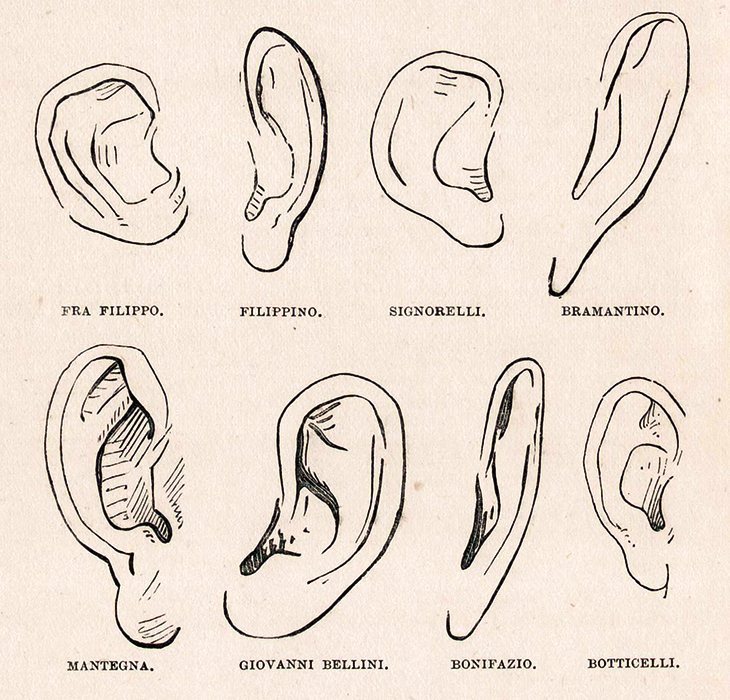
Readers will have most likely encountered Morelli as the promoter of a mode of ‘scientific’ connoisseurship. Commonly understood as an inductive method based around the comparison of seemingly trivial details, this is exemplified by the instantly recognisable diagrams of hands and ears which illustrated his art history. Anderson traces these ideas back to Morelli’s education in Munich under the anatomist Ignaz Döllinger, his exposure to the comparative anatomy of Georges Cuvier, and also his expedition to the Alps in 1838 with the geologist Louis Agassiz, a fellow former student of Döllinger (although only one letter between Morelli and Agassiz survives). Another almost paradoxical influence was the romantic morphology of Goethe and the Naturphilosophie of Friedrich Schelling, who was also lecturing at Munich in the 1830s (Morelli translated Schelling’s Über das Verhältnis der bildenden Künste zur der Natur in 1845).
As the title suggests, Anderson is equally if not more concerned with Morelli’s political life during the Risorgimento. A highlight is the chapter detailing Morelli’s involvement in the First Italian War of Independence in 1848–49, seen through a series of letters to his friends. We read of his fighting in bloody street battles to drive the Austrians from Lombardy in the spring of 1848, his diplomatic mission to Frankfurt through the summer, his despondency at the generals’ ineptitude in Venice over the winter, and his participation in the defeat at Novara. Later, we see Morelli in uniform as part of the Guardia Nazionale Mobile during the Third War of Independence, in 1866, in a pair of blurred but extraordinary photos. Morelli’s nationalist political commitments had an impact on his scientific interventions into art history, as Anderson has consistently shown. Elected as representative for Bergamo (later elevated to senator), Morelli delivered his only speech to the Italian parliament in July 1862, expressing his concerns over the predatory acquisitions policy of galleries in Britain and Germany. He was active in trying to prevent major works leaving the Italian peninsula. In 1871, Morelli convinced the diplomat James Hudson not to acquire Giorgione’s La Tempesta for the National Gallery by describing its subject as ‘too arcane’ for the British public, and five years later he hurriedly arranged the painting’s sale to an Italian aristocrat, preventing the work from being removed to the Gemäldegalerie in Berlin.
The History of Virginia the Roman (c. 1500), Sandro Botticelli. Accademia Carrara, Bergamo
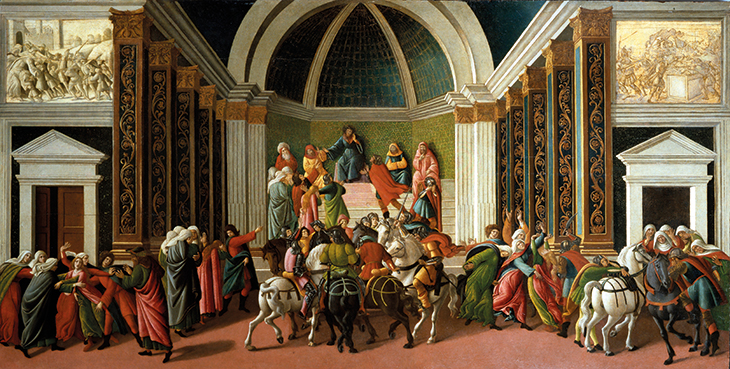
Morelli was clearly a charming man when he wanted to be, as seen through his close friendship during the last decade of his life with Crown Princess Victoria of Prussia, eldest daughter of Queen Victoria (Anderson suggests they were ‘romantically involved’). He had great taste, a keen eye, and knew how to navigate the art market (although Anderson protests against his characterisation as a dealer). His collecting, in collaboration with his cousin Giovanni Melli, is the best testimony to his connoisseurial acumen – Pisanello’s Portrait of Leonello d’Este (acquired in England in 1871) being just one of many significant works he bequeathed to the Accademia Carrara in Bergamo. A poignant moment is when Anderson reflects on Morelli’s friendship with Austen Henry Layard, which has long been a theme of her research. She concludes that Morelli was less of an influence on Layard’s own collecting than had previously been believed, and empathises with the Englishman’s disappointment in Morelli’s writing, so ‘full of venomous asides against the artistic establishment’.
It’s true, Morelli was exceedingly prickly. Quick to criticise others, he created many enemies, an aspect of his personality that is somewhat supressed in the present book. Anderson is a Morelli partisan; we are often reminded how remarkable he was, brilliant, even magnificent. She continues to fight his battles, notably in her harsh treatment of his connoisseurial nemesis Giovanni Battista Cavalcaselle. Anderson attributes Morelli and Cavalcaselle’s mutual antipathy to a personality clash between the ‘charismatic Lombard politician’ and the ‘introverted’ Cavalcaselle with his ‘morbid preoccupation with death’, even describing his mnemonic research sketches as ‘abbreviated and often inept’ – which somewhat misses their point.
Portrait of Senator Giovanni Morelli (1886), Franz von Lenbach. Accademia Carrara, Bergamo
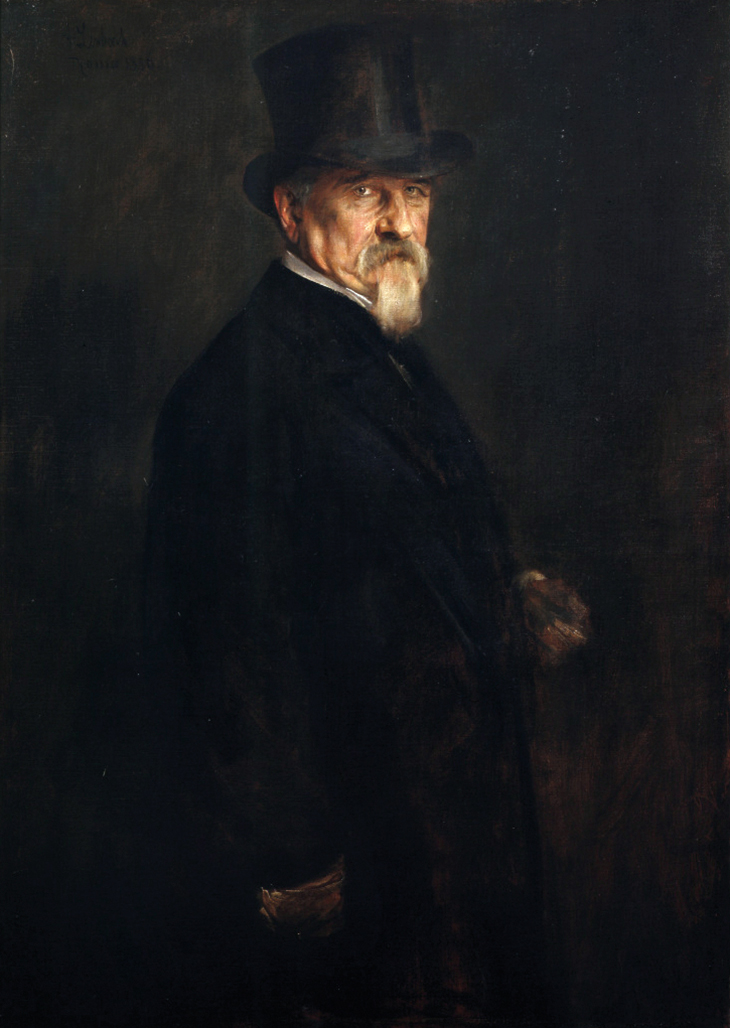
In her 1991 essay ‘Dietro lo pseudonimo’, Anderson presented Morelli as a complex, flawed, many-sided individual, who revealed different faces to different people. But despite the meticulous research, this book sadly never really explores that complexity. Perhaps the lesson is that we will never get ‘behind the pseudonym’ to the authentic Morelli: all we are left with is the mask.
From the January 2021 issue of Apollo. Preview and subscribe here.

